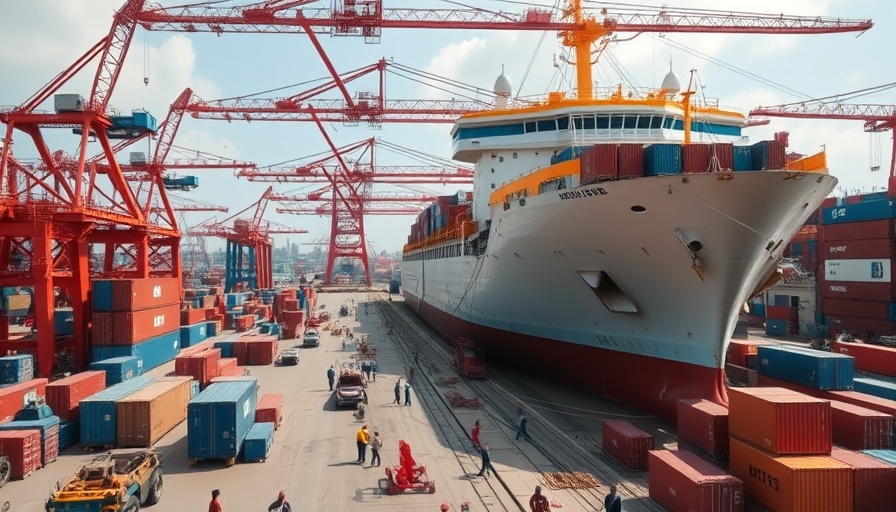
ADSB Sets Its Sights on Expanding in Asia
Abu Dhabi Ship Building (ADSB) is taking significant strides to broaden its presence in the Asian shipbuilding market, driven by promising projects and successful partnerships. For the past 30 years, ADSB has evolved into a profitable entity, recently reporting a remarkable profit of $23 million last year and achieving a sixfold increase in revenue over the past five years. At IMDEX 2025, ADSB showcased its ambitions through strategic collaborations with ST Engineering of Singapore, demonstrated by the Falaj 3 offshore patrol vessel (OPV), which highlights the company's commitment to addressing regional maritime security issues.
The Path to Profit and Growth
ADSB's journey towards growth has been commendable. CEO David Massey mentioned that doubling profits each year for the last three years is notably unusual for a shipbuilding company, suggesting effective management and strategic planning are at play. As they gear up to celebrate their 30th anniversary, the focus on profitability and steady revenue growth indicates that ADSB is not just maintaining but actively pursuing a larger market share in the industry.
Building Bridges with Indonesian Partners
Alongside its collaborations with ST Engineering, ADSB has successfully partnered with PT PAL in Indonesia, enhancing its footprint further within Southeast Asia. They are currently supplying landing craft and various components for a 163-meter landing platform dock for the UAE Navy, showcasing ADSB's ability to integrate its offerings within extensive naval projects. As Massey hints at future projects in Indonesia, the building of strong business relationships signals ADSB’s commitment to tapping into the diverse maritime needs of the region.
Targeting Market Needs with Effective Solutions
Rather than competing in high-tech segments like frigates, ADSB is wisely focusing on the OPV market. By addressing specific regional threats such as piracy, insurgency, and illegal fishing, the company aims to provide affordable and effective maritime solutions. Massey emphasizes that while each region may have unique priorities, the core problems remain consistent, allowing ADSB to tailor its offerings effectively. The FA-400 OPV, designed and built on-spec in under a year, showcases ADSB's agility in product development and market responsiveness.
Understanding the Demand for OPVs
With escalating global threats on the seas, the demand for OPVs is paramount. As evidenced by Massey's insights, various nations share similar maritime issues that require practical and economical solutions. By focusing on OPVs, ADSB aims to provide significant value to nations seeking to bolster their maritime capabilities. The commitment to develop a range of patrol boats that combat shared challenges ensures that ADSB can meet market demands effectively.
Future Predictions: A Bright Outlook for ADSB
Looking ahead, ADSB's trajectory appears promising. As they build their portfolio of intellectual property and enhance their capability to deliver customised solutions, the potential for growth in Asia is robust. Their proactive approach in targeting specific naval requirements and fostering strong partnerships positions ADSB as a leading candidate to fulfill the evolving needs of the maritime industry.
Cultivating Innovation in Shipbuilding
The process of innovation within ADSB is a cornerstone of their strategy to capture the Asian market. By fostering an adaptable design and manufacturing process, ADSB is not only refining its existing capabilities but also exploring new technological advancements. Staying ahead in this competitive industry means being responsive to changes in demand and investing in research and development, ensuring that the company remains a formidable player as regional dynamics evolve.
In conclusion, ADSB's ambitious vision and clear strategy for growth in the Asian market present a multifaceted opportunity not just for the company, but also for the regions it seeks to serve. Their focus on practical solutions and ongoing partnerships could set a new standard in shipbuilding and maritime safety efforts in Asia.
 Add Row
Add Row  Add
Add 




Write A Comment